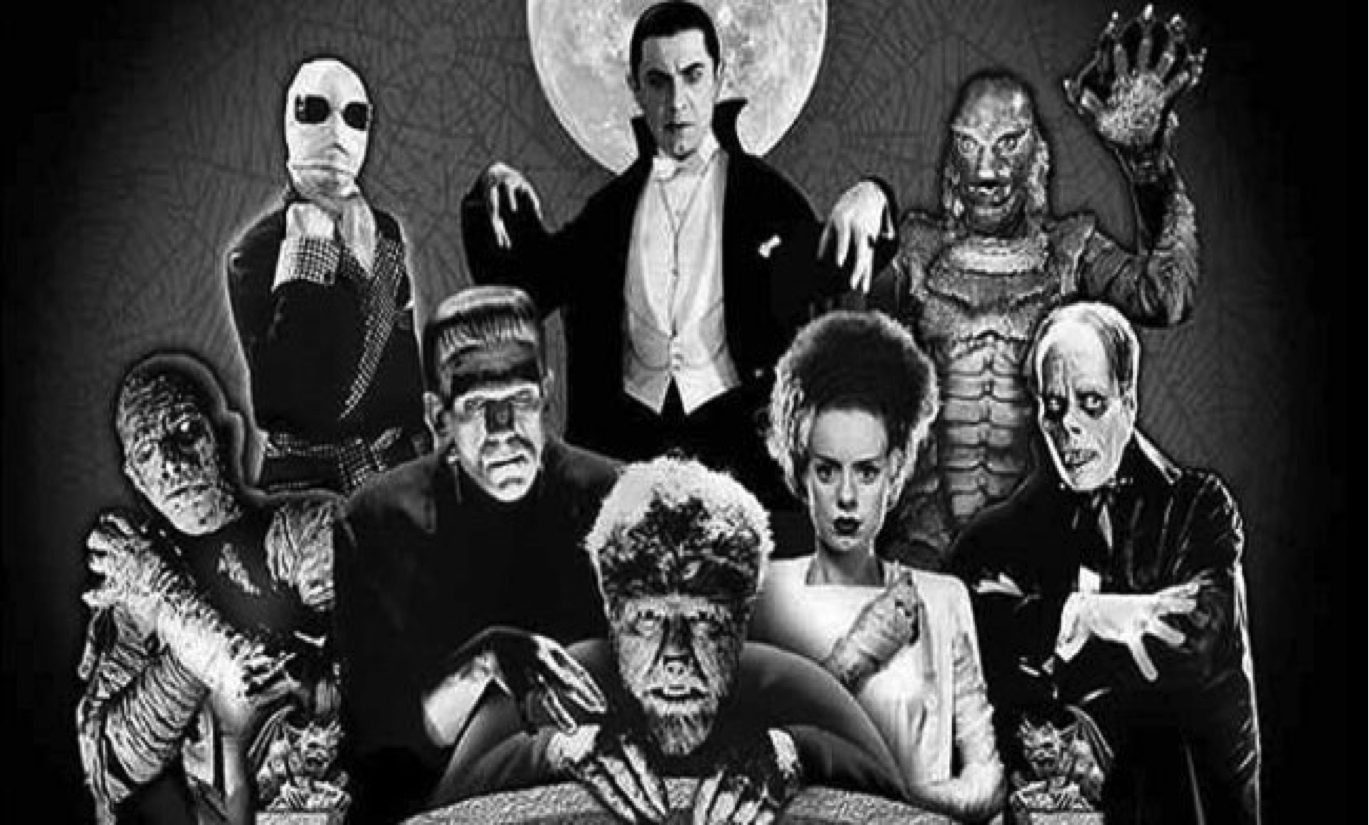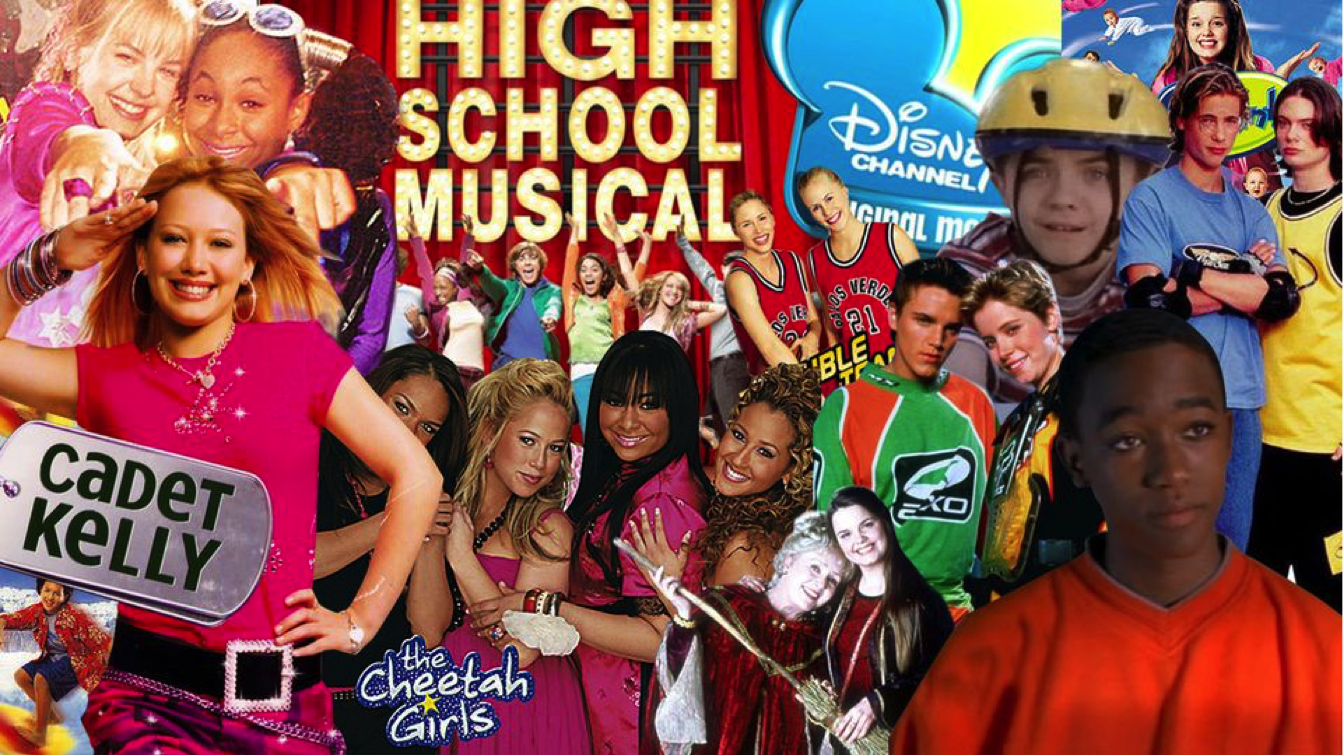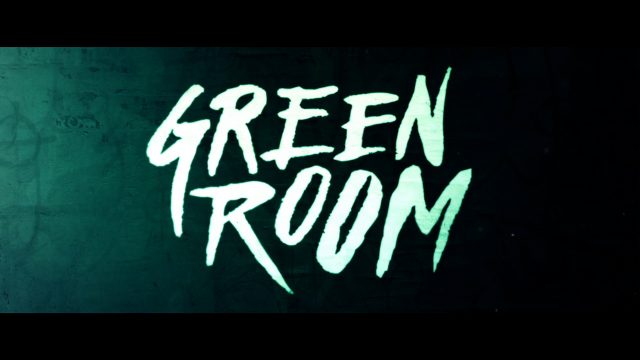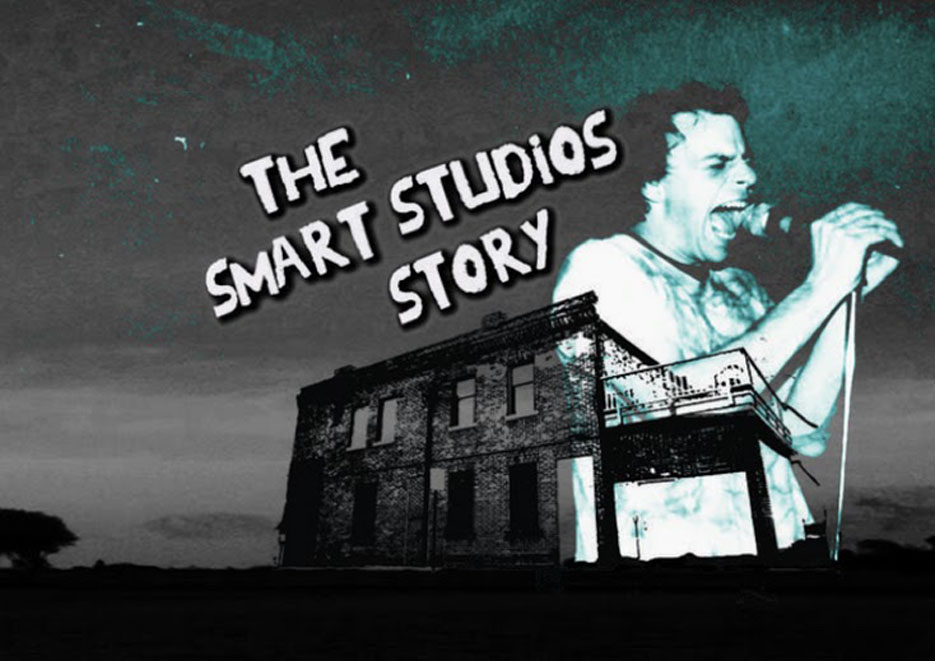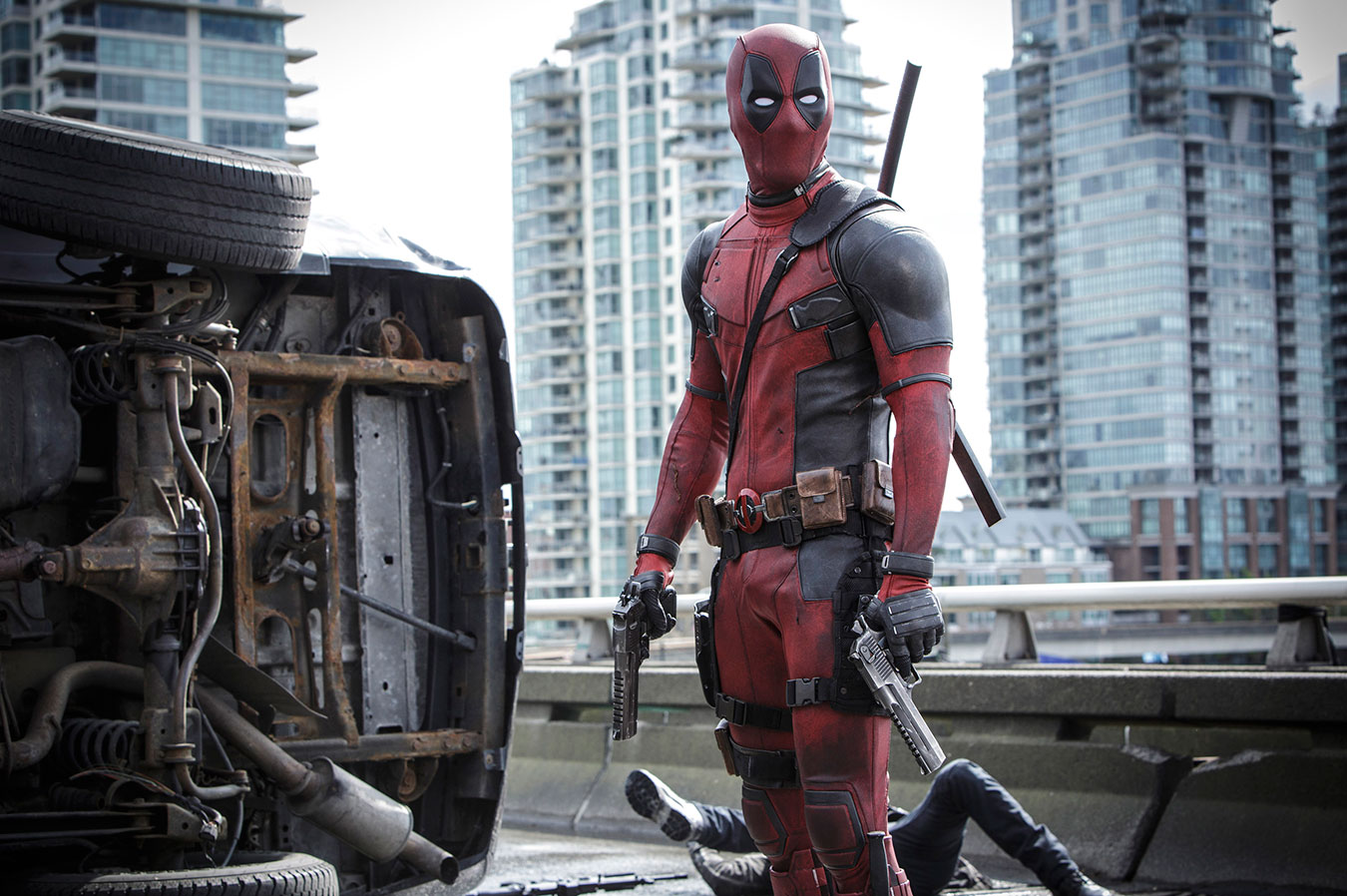So What's The Best J. Cole Album So Far?
The J. Cole hype couldn't be greater right now after the 4th major album release from J. Cole, For Your Eyez Only. Many are expecting it to be album of the year with only 2 songs released. They are also expecting it to be "another classic" [See Social Media] and it made us think. What is the best J. Cole album so far?
3 - Cole World: Sideline Story. Sideline Story is the hands down laziest album for me. When I heard Cole say he added songs from his mixtape to this album because he felt enough people didn't hear them, I immediately lost my interest in buying it. Emcee's shouldn't do that. Sorry. I toss this one to the bottom of Cole releases because I heard a lot of it before the wave got real.
It's interesting going back and listening to this album now. It's difficult to replicate the hunger you hear in the very young J. Cole's voice in nearly each song. This is often the case with many rappers when juxtaposing their early catalog over their more recent works. The effect this has is ultimately subjective, but for us it's clear young Simba was not yet the king.
[iframe id="https://www.youtube.com/embed/ZOrPNbKHQm8"]
2 - 2014 Forest Hills Drive. The Platinum with no features album. The album that inspired a bunch of jaded, misguided and misspelled memes for the last 2 years. It's not that this album is whack necessarily, it just doesn't move me. The middle of this album made me dose off. I'm not a fan of the singing efforts. Tracks like "St. Tropez" and "Hello" come of as somewhat forced and, as a result, slightly in-genuine.
What's more, tracks that were clearly intended to be in more of a pure hip hop vein, like "Fire Squad" turned out to be little more than filler. To be clear, Cole had hits on this project. "Wet Dreamz" and "Tale of 2 Citiez" are both catchy and have a well-rounded appeal. "January 28th" and "No Role Modelz" are anthems in their own right as well. To us, they were just too few and far between to justify ranking this album higher up. To the Cole Stans, we're sorry, but 2014 a little boring. We credit cole for giving us a bunch of new music though.
[iframe id="https://www.youtube.com/embed/ijy2GFWqeAs"]
1 - Born Sinner: This album was a hype beast dream. New Rappers, good features, Hit singles and was deemed a classic because everyone hated Yeezus and didn't pay attention to The Gifted by Wale. This album is the best of the 3 to me because it's the best representation of what Cole can do. Songs like "Land of the Snakes" serve as a verbal exhibition for Cole, with a concise, driven flow over an equally driven instrumental.
"Trouble" was a favorite off of the album, featuring a menacing instrumental with Cole's cocky humor at play on top of it. Born Sinner made it clear that he can make hits if he wants. He can really rap. He has the potential to be a great producer. The subject matter isn't that great or diverse, but I honestly feel the release of 2014 FHD builds the appreciation of Born Sinner. It's number 1 for me, but not cause it is "so much better" than the other releases around it.
[iframe id="https://www.youtube.com/embed/UCjl3xEdA_k"]
Check out more on Cole here.
Horror Movies: How Have They Changed?
Since the early 1930s, after the release of the first talkies movie, monster movies became a major hit. Films like Dracula and Frankenstein set the president for horror films during this period.
Here’s a look back at a few of the original "monster” movies and how these supernatural creatures were portrayed during the 1930s/1940s in film:
- Dracula (1931) —> The film begins with local residents speaking about the legend of Count Dracula as a vampire, creatures that feeds on the blood of humans. Renfield, who plays a logical minded non-believer at the beginning states that it is a matter of business. Renfield says that he must go up to visit Count Dracula. The representation of vampires in Dracula is shown through the coffin in a dark, dirty basement with bugs and rodents. This image is not as glamorous as how vamps are portrayed in today’s movies and television. However, there are elements of vampire myths with strong ties to how they are viewed in television and movies today. Even the smallest amount of blood draws in a Vampire, which is still true in Vampire film and shows today. In Dracula, even the sight of a cross repels vampires. This mythical ideal has also been used in on-screen content such as Buffy the Vampire Slayer. Dracula’s appearance doesn’t appear in the mirror, which goes along with myth that vampires can’t show a reflection in mirrors.
- However, there are other elements, both mythical concepts of vampires as well as on-screen presentation and formatting, that has changed over the years. For example, the light that hits around Dracula's eyes, magnifies his eyes and leaves the rest of his face in shadows. Dracula’s lit up eyes seemingly draw in his victims, while mildly paralyzing them enough so that he can feed on them without a fight. This image of glowing eyes in vampires hasn’t changed completely, but has been altered in correlation with technological advancements. Dracula is able to enter into Lucy Westenra's room without an invitation inside, which goes against the famous myth that vampires need to be asked inside a person’s home; a concept that is often employed in vampire themed movies and television today. Renfield belongs to to his “Master,” Count Dracula. Renfield’s persona is different. It appears he has gone “crazy.” His new behavior is also shown in a newspaper story that states that was “a raving maniac; his craving to devour ants, flies, and other small living things to obtain their blood puzzles scientists. At present he is under observation in Doctor Seward’s Sanitarium near London.”
- Professor Van Helsing believes that Lucy death was the result of a vampire; but his associate Dr. Seward argues “Modern science does not admit to such a creature.” This theme of believe vs. non-believe and sane vs. insane appeared to be a very structured way of introducing the supernatural; we also see this concept in movies such as Frankenstein and Wolf Man.
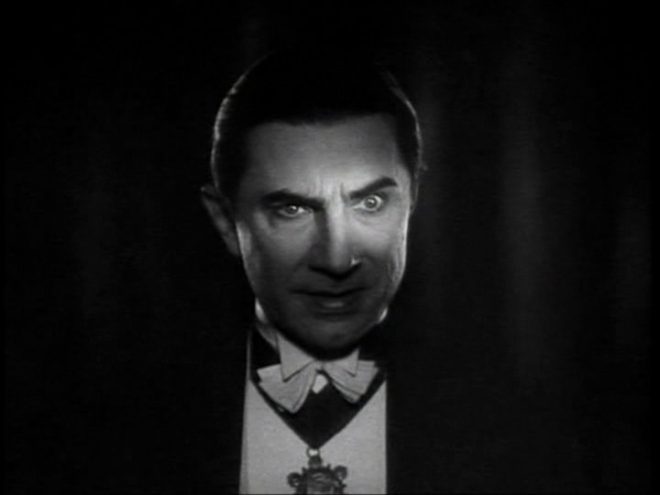
- Frankenstein (1931) —> The film begins with the famous opening presentation of Frankenstein that warns the audience what they are about to see may “horrify you, and may even shock you”; a presentation that is often reused even today when introducing a Frankenstein-themed story line. The story opens up with Henry Frankenstein, a scientists who is creating new unusual experiments and attempting to creating life through science by his “own hands.” When those closest to Henry discover his disturbing experiments, Victor calls Henry crazy at the idea that Henry thinks he could create such a monster. Henry truly believes that his experiment will work, stating, “A minute ago you said I was crazy. But tomorrow, we’ll see about that." But it is important to note that even if Henry's invention works, doesn’t make him any less crazy. Maybe he is crazy for simply conjuring up the idea to create this inhuman creature in the first place, whether it works or not.
- Once Henry’s creation comes to life, he screams, “It’s alive! Now I know what it feels like to be God.” Henry doesn’t see the flaws in his creation plan or that it could be potentially dangerous, and that no human being has the power to play God. Henry refuses that it could be dangerous when Dr. Waldman addresses this issue with Henry. Henry seems to believe that dangerous and adventurous are synonymous. “You have created a monster and it will destroy you,” said the doctor. “Patience, I believe in this monster, as you call it,” Henry responds. After Henry experiences his creation's behaviors, he starts to realize that he created a monster. Henry and Dr. Waldman then attempt to try to kill the creature.
- The audience can see these “shocking” actions from the creature of Frankenstein coming. There is a visible lead up to Frankenstein’s attacks on Dr. Waldman and Elizabeth create a sense of build up and even intensity, to some extent, for audience members. Yet the build up and intensity differs from movies and tv shows today. On-screen horror content today is created by using pop-outs and sudden actions shock audiences. Every scene is pre-meditated, from the slow creation of Frankenstein to the crowd of people with lit torches chasing down Frankenstein. It is believed that Frankenstein, the creature, is finally dead and the town rejoices. However, the film Frankenstein’s Bride reveals that Frankenstein is still alive. This method of shocking the audience by bringing about a part 2 to the story is an example of when films and television first began; a method that still exists today.

- The Wolf Man (1941) —> The film opens up by providing a definition at the beginning; a method that rarely, if ever, that still lives on in films and television today. Lycanthropy (werewolfism) - a disease of the mind in which human beings imagine they are wolf-men. Larry Talbot, who is the lead role, portrays a kind gentleman with clear moral boundaries and standards. Yet, his morality is put into question after killing the fortune teller, who was a were-wolf. Although Larry thought he simply killed a wolf, the appearance of a dead man challenged everything he thought that he knew. Were-wolf myths in the film aren’t as common as in today’s on-screen were-wolf lore. For example, “A were-wolf is a human being who at certain times of the year turns into a wolf,” says Gwen Conliffe. “Every were-wolf is market with a pentagram, it sees it in the palm of his next victims hand,” she continues.
- Although there are no surprises, with completely expected scenes, audiences during the 1940s may have had different perceptions of shocking and unexpected occurrences in films. Maybe it is the telling of the lead character’s story, rather than unexpected plot twists, that entertained audiences during the 1930s and 1940s.
- Larry’s first kill as a were-wolf shows hesitation, briefly addressing his inner humanity and the morality of his human side. Yet, the animalistic primal urges lead Larry to ultimately kill. Larry is hated by the towns people as an animalistic murder for killing the psychic who he seemingly thought was a wolf. The doctor views Larry as sick when Larry asks the doctor if were-wolves exist; because he is mentally sick, the Dr. states that he should leave town as a result of his “sickness”; Sir John Talbot ties up his son, Larry. Sir John tells the doctor that Larry will realize this is all in his head after the hunt is over. However, the gypsie women’s words force Sir John to confront his thoughts/suspicions all along that maybe Larry really is a were-wolf. When the were-wolf Larry attacks Sir John, Sir John has no choice but to kill the animal, his son.
- As in movies such as Dracula and Frankenstein, Wolf Man presents a similar theme of these supernatural creatures in which you need to see to believe. However, seeing these creatures also brings these characters to question their own sanity.
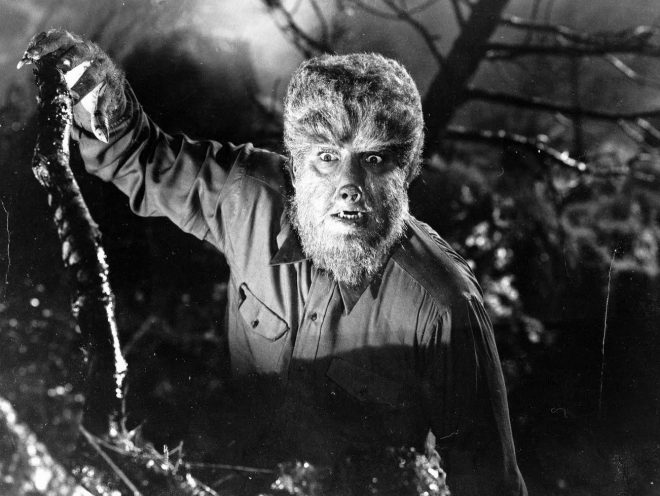
- The Wizard of Oz (1939) —> This film differs from the typical image of scary movies involving a supernatural creature/s during the 1930s/1940s period; Yet, the Wizard of Oz was the first popular portrayal of witches in movies. The film doesn’t confine the image of witches as simply evil or wicked. The Wizard of Oz shows the good and beautiful witch, Glinda, who helps Dorothy; versus the Wicked Witch of the West, who sets out for destruction and the powerful Ruby slippers that Dorothy; possesses. This interesting plot line that brings an array of unique, un-human creatures into one story line. Most of the un-human creatures, such as the lion, the scarecrow and the tin man are all morally good; they all have good intentions, despite their self perceived flaws of lacking a heart, a brain, or courage. Movies and tv shows on the subject of witches didn’t become popular until the after the 1960s. The topic on witches expanded largely in the mid 1980s and into the 1990s with films like The Witches of Eastwick, Hocus Pocus, Practical Magic, The Blair Witch Project, etc.
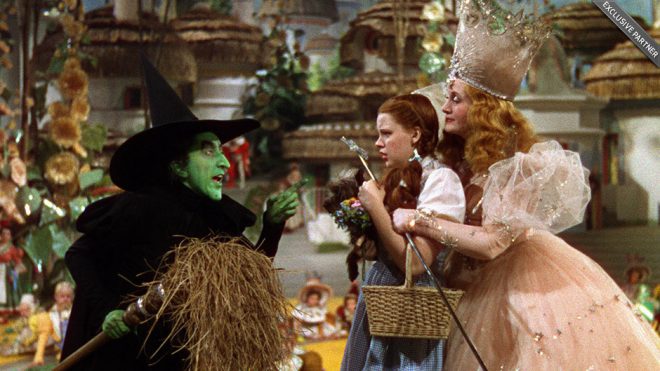
In nearly 100 years, the portrayal of on-screen monster films and television has changed a lot. Movies and television have evolved a lot over a century. But one of its most prevalent examples is in the supernatural/horror genre. Today, horror movies have more intense scenes, more complex and heavily involved story lines, and technology that has majorly enhanced the appearance of these mythical supernatural creatures. Even the depiction of these monsters and their character arcs have become more involved over time. New or old, it is interesting to see the evolution of these legendary on-screen creatures. And of course the original on-screen depiction of the monsters that started it all.
Disney Channel Original Movies: Have They Changed?
Being a kid in the 90s and watching disney channel at least 50% of the time, I also grew up loving disney channel original movies. So obviously, I started to binge watch as many dcoms as I could when I noticed they were on demand. Here’s a list of the top 6 Disney Channel Original Movies worth mentioning:
- Zenon (1999) (6.4 rating) —> A young girl takes on the task of saving her home and community in outer space with the help of her friends and family.
- The Color of Friendship (2000) (7.4 rating) —> This dcom discusses the impacts of environment, race and culture on relationships and how a child's sense of morality and friendship is not confined by where you come from or the color of your skin.
- Motocrossed (2001) (6.8 rating) —> This movie focuses on female strength and that a girl/woman can succeeding in anything they put their minds to, especially with the strength and support of friends and family.
- Tru Confessions (2002) (7.8 rating) —> This dcom highlights something much more important than a child with disabilities. Tru Confessions shows what the support of family really means and that disabilities don’t define you. To Tru and her parents, her brother Eddie is a brother, a son, and a friend first and foremost.
- Jumping Ship (2001) (6.3 rating) —> This movie shows how three individuals, despite their differences, can work together to survive and create strong friendships with one another. Although this movie contains a lower rating, this was my favorite dcom growing up as a kid.
- Double Teamed (2002) (6.2 rating)—> This movie shows the value of teamwork and sisterhood, and sportsmanship. It also highlights that everyone is an individual and everyone is different, even twins.
Imagine, for those who grew up with these movies, watching disney channel original movies for the first time as adults. Our admiration and loyalty for some of these disney films probably wouldn’t be as strong.
As a kid, these movies were pure entertainment. But the life lessons buried within these movies also helped to inform us. It provided us kids with strong examples of morality in family and friendship.
This brings into question whether disney channel original movies were better 20 years ago compared to today, which seem cheap or cheesy to me now. Somehow, dcoms today seem to pale in comparison; that they are not the same level of quality as dcoms of the late 90s/early 2000s. However, could this just be because as adults, we view these kids movies differently now; rather than our innocent, undeveloped child brain would.
According to IMDB the majority of dcoms, both new and old, contain ratings ranging between a 5.5 and a 7.5; this would be deemed on the lower side of average. But again, this system of rating by adults goes back to the same concept. Watching these movies as adults takes on a completely different perspective of Disney Channel Original Movies compared to the child adoration of these movies. Watching dcoms at a young age impacts both the kid watching these films; as well as a nostalgic adult remembering the young fondness for Disney Channel Original Movies.
‘Neighbors 2: Sorority Rising’: Comedy sequel that works
Some years have past since the Radner family first battled with exploding couch air bags with the fraternity that moved in next door. Now Mac (Seth Rogen) and Kelly (Rose Byrne) with baby number two coming have decided to sell the house and move out to the quite suburbs.
While this is going on we see three eager freshmen ladies lead by Shelby (Chloë Grace Moretz) challenge the status quo of the typical sorority life. Not having the sexist filled lifestyle that comes with joining a sorority the ladies decide to create their own. With new rules in place that are meant to empower the newly found sorority they look for a home to house all these party hunger weed smoking college students. Moving in next door to the Radner’s, their over the top partying could hurt the selling of their home.
On a thirty-day furlough to sell the house they seek help from an old enemy now turned friend Teddy (Zac Efron) to get the sorority out of the house. Old and new antics explode between everyone as the sorority will stop at nothing to have their right to party while the tag team group of the Radner family and Teddy give it their all to stop this new college party force.
[youtube id="X2i9Zz_AqTg"]
Neighbors 2: Sorority Rising continues the laughs we saw in the first film while adding a very funny spin on gender roles. Throughout the film serious dark tones are masterfully handled in a way to deliver sharp hard laughs.
Neighbors 2: Sorrity Rising
Director: Nicholas Stoller
Rating: R
Release Date: May 20, 2016
Neighbors 2: Sorority Rising provides a satisfying comedy sequel a rare occurrence that many film franchises get wrong. Teasing fans with a potential third film with a zombie twist, Neighbors 2: Sorority Rising is a knockout.
Rogen of course is the comedy lead whose sharp voguer jokes and “dad bod” is the perfect contrast to Efron’s attractive wholesome appel to younger audiences. The two work well off of each other bringing in new laughs from it’s predecessor.
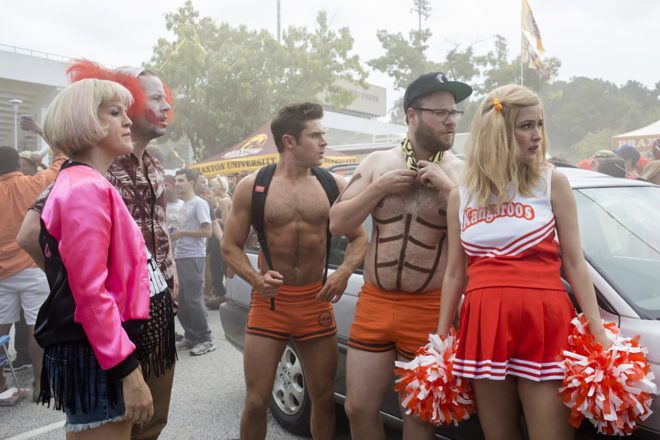
Efron in Neighbors 2: Sorority Rising is an unmotivated fraternity member who peaked in college. With all of his fraternity brothers living their well established lives Efron is in a rut. Efron’s rise from rut brings plenty of laughs in his revolutionary journey to find something he’s good at. The crazy antics we see him and Rogen devise against the sorority holds nothing back.
Virtually doing the same gags from the first film, but now against a sorority, the new elements added to the back and fourth attacks make for an over the top hilarious brawl.
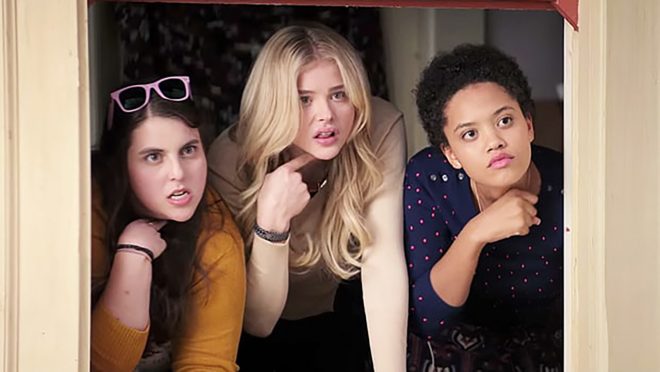
The new element to Neighbors 2: Sorority Rising is of course the very funny female additions to the cast. Often used a punchline, the feminist ideas in Neighbors 2: Sorority Rising challenge social norms in the college Greek life community. With Moretz taking the lead in this rebellious cast of lady misfits they provide Neighbors 2: Sorority Rising the lift this comedy needed to become a comedy classic.
Neighbors 2: Sorority Rising was a surprisingly satisfying comedy sequel that outdid its self from it’s processor. It’s over the top antics at times provide grossly laughs as the sorority members stole the show. Packed with explicit one liners and bold hilarious scenes Neighbors 2: Sorority Rising will be hard to top.
Lupita Nyongo, more Brown girls we’d cast in Marvel’s ‘Black Panther’
Lupita Nyong’o, best known for her Academy Award-winning performance in 12 Years a Slave, is on track to play the love interest opposite Chadwick Boseman in Marvel’s Black Panther.
The Mexican-born Kenyan beauty is in talks to take on the unspecified role, according to The Hollywood Reporter. Should she sign on the dotted line Nyong’o will star alongside Boseman, the super genius warrior king of the African nation of Wakanda, also known as the Black Panther, or, T’Challa.
In the Marvel universe, Wakanda is famous for its rich deposits of vibranium, the unbreakable metal used to make Captain America’s shield. Spoiler alert: as expected, T’Challa makes his first appearance in the latest Marvel blockbuster, Captain America: Civil War, with Boseman offering much needed clarity, adding new insights about his character's past.
For those unfamiliar with Black Panther, he was the first Black superhero to surface in mainstream comics. In July 1966, he made his comic book debut in Fantastic Four No. 52. Though predated by characters like Marvel’s Gabe Jones and Dell Comics’ Lobo, his initial appearance cemented T’Challa’s place as the first superhuman in the medium’s mainstream history.
Although very little is known about Nyong’o’s proposed role, we imagine she’ll have the ability to kick some butt, much like her brilliant tactician, strategist, scientist, tracker and a master of unarmed combat boyfriend. In the event Nyong’o doesn’t take the role, we’ve compiled a list of brown girls we’d cast in Marvel’s Black Panther. They’re bold, beautiful and known to kick some tail end. Hit the flip to check out our top five picks.
Article Originally Published by our friends at Rolling Out.
[Review] 'Green Room' an unforgettable punk rock horror film
Independent director Jeremy Saulnier brings this twisted unforgettable tale of a momentous punk rock attitude crashing into the world of shock and uncertainty in Green Room.
Inspiring and struggling hardcore punk rock band members Pat (Anton Yelchin), Tiger (Callum Turner), Sam (Alia Shawkat), Reece (Joe Cole) are delusional punk rockers named the Ain’t Rights.
[youtube id="Q8XSARX3DQg"]
Low on funds with an itch to perform, the Ain’t Rights make their way to a back of the woods hardcore punk rock club. Unaware of its usual crowd the Ain’t Rights find themselves performing in front of REAL hardcore punk rockers who just so happen to be Nazi skinheads.
Leaving the show, Pat sees something he wasn’t supposed to see. Caught in the middle of a bad situation turned worse Pat and his band mates are thrown into a dark world of drugs and murder from the hands of the ruthless club owner and his no moral limit henchman.
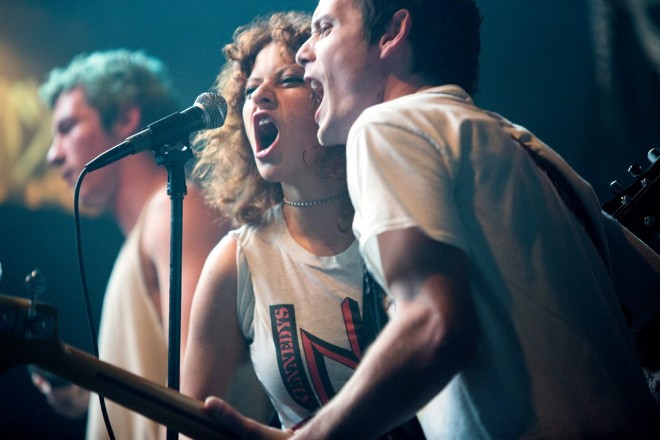
Green Room
Director: Jeremy Saulnier
Rating: R
Release Date: April 22, 2016 (Chicago), April 29 nationwide
In Green Room we see these young inspiring punk rockers go through hell trying to make it out alive. This real human reaction leaves a unsatisfying feeling of unpleasantness because of the unfamiliar future of what may happen next.
This in your face cut throat style of story telling leaves urging questions of what’s going to happen next. Focusing and centering the green room located backstage of the bar they just performed in visual director Saulnier uses every inch to paint a haunting picture of no escape.
Amber (Imogen Poots) and Pat (Anton Yelchin) stood out as both unsuspecting untraditional figures. All the characters in the film go against what we’ve seen in past horror thrillers which also creates a surprising momentum of story telling.
Music fans will also enjoy this film for it’s taste and showcasing of music from artist like Corpus Rottus and Battletorn as well as original music from the films band the Ain’t Rights.
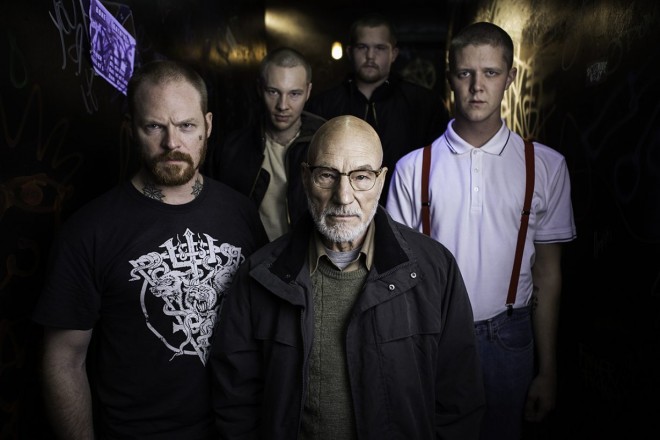
A huge standout moment of the film is how Patrick Stewart emerges as a complete terror and haunting villain with no human remorse. As the leader of white skinheads, Stewart’s soft spoken portrayal is truly menacing.
Stewart’s portrayal alone is reason enough is see this film but definitely not its only one. In Green Room we see a captivating story that leaves us wanting more every second. This thriller is one that many will talk about for years for it’s original take and its brilliant delivery.
Check out the interview with producer Jeremy Saulnier.
[Review] The Smart Studios Story
The Smart Studios Story
Director: Wendy Schneider
Rating: N/A
Release Date: March 16, 2016
The Chicago International Movies & Music Festival (CIMM Fest) opened last night with the first Midwest screening of The Smart Studios Story, at The Music Box, and it did not disappoint. The documentary revisits the legendary Madison recording studio that helped birth the indie rock and pop culture scene of the 80's and 90's. Founded by Butch Vig and Steve Marker in 1983, the studio produced bands such as Killdozer, The Smashing Pumpkins, L7, Tad, Garbage, and Nirvana. The story chronicles the humble beginnings of the studio, their rise to fame, and the end of a grand era.
[vimeo id="87298310"]
The Smart Studios Story premiered at South by Southwest this year, but this screening here in the midwest, where it rightfully belongs, was quite special. CIMM Fest even provided an exclusive Q&A after the screening where Butch Vig, Steve Marker, and Director and Co-Producer Wendy Schneider were completely open to sharing their experience in making the film, going through memories, even sharing some that didn't make the film.
Overall, this was one of the best music documentaries I've seen in a long time. The bass thumping soundtrack, along with heartfelt interviews from Butch Vig, Steve Marker, Billy Corgan, Dave Grohl, Shirley Manson, Donita Sparks, Chris Walla and tons of great bands were all completely raw and entertaining. The special impact the Midwest continually has on pop culture is eloquently demonstrated, and the story has all the footage to prove.
For more screening and event info, check out their site here.
[Review] Deadpool
Superhero fatigue: It's a very real thing, especially at the beginning of a year in which we'll see Deadpool, Batman v Superman: Dawn of Justice, Captain America: Civil War, X-Men: Apocalypse, Suicide Squad, and Doctor Strange representing the superhero film genre. By now, we've grown tired of the standard Marvel formula, as showcased by the less-than-stellar reviews of Ant-Man and Avengers: Age of Ultron last year. However, Fox has done their best to change not only our expectations of the genre, but for the film itself, as seen by the tone-perfect marketing campaign.
Can Deadpool rise up to the challenge with maximum effort?
[youtube id="ZIM1HydF9UA"]
Deadpool
Director: Tim Miller
Rating: R
Release Date: February 12, 2016
Wade Wilson (Ryan Reynolds), as we come to find out, is a merc-for-hire specializing in defending girls from their stalkers thanks to his experience in the Special Forces. His best friend, Weasel (T.J. Miller), is a bartender and proprietor of extracurricular activities at his bar where many of the other mercs and vigilantes find their next missions, and his girlfriend, Vanessa (Morena Baccarin), is just as twisted as Wade is. However, he's soon afflicted with terminal cancer, making him a target of an underground lab that experiments on triggering mutant powers within humans, led by mutant Ajax (Ed Skrein) and his bodyguard, Angel Dust (Gina Carano)... you get where I'm going with this.
However, where Deadpool differs from other superhero origin films is its approach at its plot chronology. To a certain point, Deadpool tells its story in a non-linear way, allowing its storytelling to match the setting of a comic book that specializes in breaking the fourth wall and playing with its audience/readers. Undressing the film of its non-linear approach, however, reveals the standard revenge plot... but honestly, is the plot really what we're watching Deadpool?
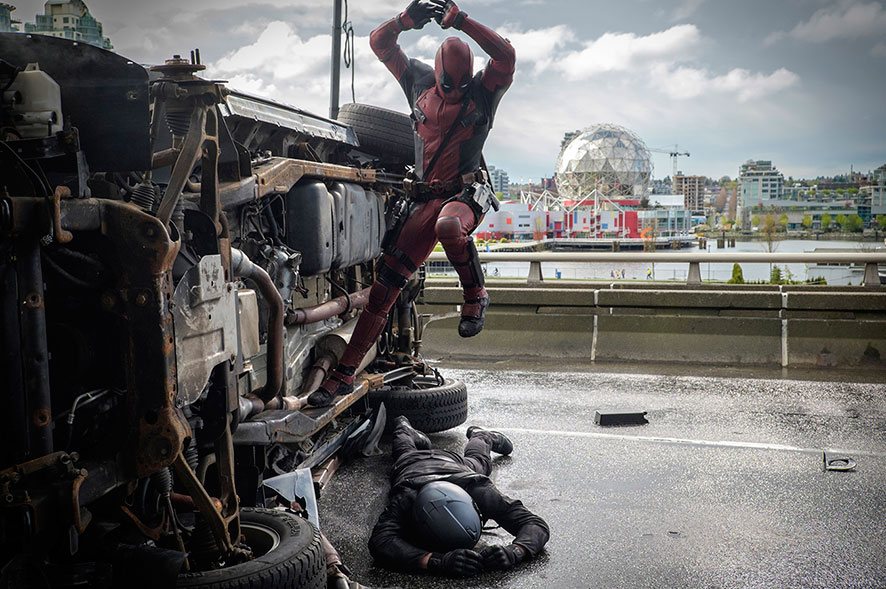
Absolutely not. Finally, we're given a mainstream Hollywood comic book adaptation that truly allows the source material to be faithfully represented on the silver screen. Deadpool, as he's become to be known currently, is the anti-hero that fully embraces his existence within the confines of a comic book, allowing the writing to go in interesting ways... ways in which the standard mainstream superhero book wouldn't. Thusly, the comic book fandom embraces Deadpool as one of their own, someone who is a total badass that doesn't settle for the standard or takes himself seriously... as you'll see from the film's very first second.
Championing the character, and this film's sole existence, is Ryan Reynolds, who was destined to don the red and black in a way that does the role justice, not the poor excuse that was Deadpool's now non-canon debut in X-Men Origins: Wolverine. As he's said in recent interviews, Reynolds doesn't want to play another superhero character because of his organic connection to the role that highlights and accentuates the actor's strengths. Sprinkled in are the X-Men Colossus, voiced by newcomer Stefan Kapicic, and X-Men trainee Negasonic Teenage Warhead (Brianna Hildebrand), who serve no real purpose beyond connecting Deadpool with Fox's ramshackle universe. Further confusion sets in when you attempt to make sense of the Fox/Marvel universe and where Deadpool fits in the timeline alongside X-Men: Days of Future Past and this year's aforementioned X-Men: Apocalypse, so do yourself a favor and just take Deadpool for what it's worth.
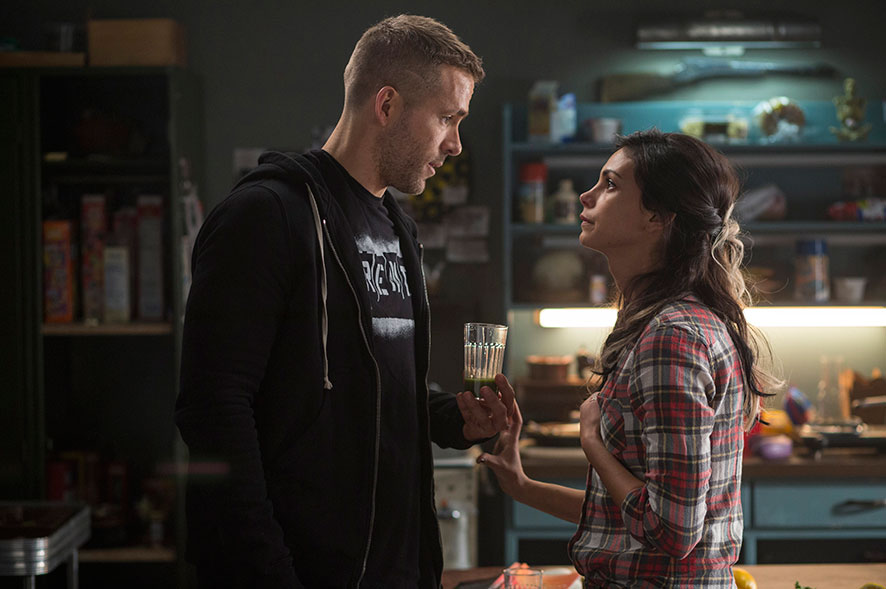
And its worth is a near-perfect film adaptation of a fan favorite comic book that will meet audience's expectations... and then some. I'll go so far as to say it'll be equitable in its box office returns in comparison to the projected blockbusters Captain America: Civil War, Batman v Superman: Dawn of Justice, and Suicide Squad, thanks to its dedication to its source material, Reynolds' perfect portrayal of the Merc with a Mouth, and a full embracement of the R-rating that will make all superhero film fans forever curious of what it would be like to see Wolverine truly draw blood. Don't get it twisted: this may be a Marvel adaptation, but it definitely isn't meant for kids.
Deadpool is everything we wanted it to be since it was officially announced... beyond the predictable plot and shoddy placement within the larger X-Men/Fantastic Four universe Fox has attempted to create. Much like Hugh Jackman's Wolverine and Robert Downey, Jr's Iron Man, Ryan Reynolds' Deadpool is the perfect casting for a role that's destined to be franchised around. Deadpool sets the bar extremely high for its superhero brethren this year, and it'll be entertaining to see just how each film compares to this instant classic.


